Making ‘Manto’ was a miracle: Nandita Das

By Neeru Saluja
She stirred a fire with her controversial role in Deepa Mehta’s film ”˜Fire’. Be it her unconventional roles, her ”˜Dark is Beautiful’ campaign or the unique stories told via her directed films, actress and director Nandita Das has always defied the norms of Bollywood.
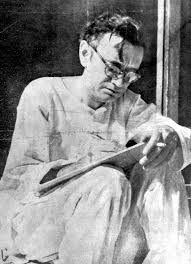
So when she chose controversial Indian-Pakistan writer Saadat Hasan Manto as the subject for her next film, it came as no surprise. Her film ”˜Manto’ is based on one of South Asia’s greatest writers of the 20th century, bringing his violent, sexual and shocking short stories about Indo-Pak partition to life.
After a world premiere at her favourite Cannes Film Festival, Nandita Das is now bringing her film to the Sydney Film Festival. We had the honour of interviewing the international award winning actor and director where we talked about Manto, why she chose Nawazuddin Siddiqui to play the role of Manto and how she dons so many hats.
Congratulations on Manto’s world premiere at the Cannes Film Festival that left the audience stunned. Being on the jury twice for the prestigious film festival and recently presenting your second film, how did you feel?
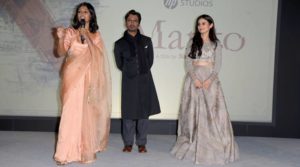
Thanks! We got an overwhelming response, both from the audiences and critics. Yes, Cannes is not new to me. I have been coming here since I was invited in the main jury in 2005. Before I left for Cannes, I felt the excitement and nervousness of a director whose film is going to be screened at the most prestigious film festival in the world, with the toughest-to-please audiences and critics. Cannes is a rare festival that actually caters to film professionals and not general audiences, so the audience is a very discerning one and exposed to world cinema.
On the day of the premiere, I was neither euphoric, nor nervous. Just happy. The fact this film actually got made is a miracle. For it to be in Cannes, was the second miracle. After the film, we got a 4-minute standing ovation. Some strangers hugged me, some sobbing, some rather somber. Some just sat in their seats still immersed in the experience. Some chose to walk out quietly, as if not wanting to break their experience. Six years of relentless work and challenges had finally found its culmination. All in all, I have returned with great sense of gratitude for the kind of response the film has garnered. This year’s Cannes was like no other year.
Straight from Cannes, Manto will now be screened at the Sydney film festival. What part of Manto’s writing would you like to impart to the Australian audience via the film?
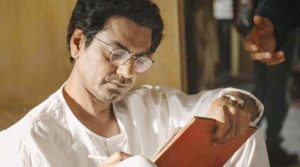
The film showcases Manto’s journey through four tumultuous years (1946-50) as well as the parts of some of his best writings. It is an intimate and imaginative retelling of that time, seen through the eyes of an intensely engaged writer. The lines between fact and fiction were blurred just as in my own life I see no demarcation between my work and my life. So the film too interweaves his works and the main narrative, almost seamlessly. This form allows the audience to enter his state of mind, both as a person and a writer.
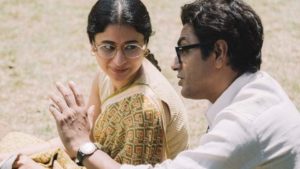
The film is not based on any one book, or any specific work. It has taken me 5 years of research and writing to tell the story that seems most relevant to our times. So much of his writing has made it into the film. Most of what Manto and other characters say, is taken from his own writing and that of his contemporaries. The fact he was so prolific was really helpful.
What inspired you to make a film on Manto? Why do you think he is so relevant in today’s society?
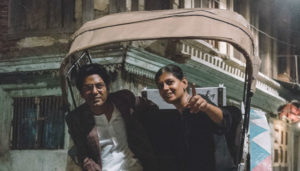
What drew me to Manto was his free spirit and courage to stand up against orthodoxy of all kinds. It is his fearlessness and a deep concern for the human condition that I have always felt most deeply connected to. No part of human existence remained untouched or taboo for him. For him, the only identity that mattered was that of being a human. Manto’s faith that his works could stir the mind and the heart, through the hardest times, resonates with my own passion to tell stories. In some mystical way, I feel I am part of that hopeful legacy. For me, making the film was not just about telling people about Manto but to invoke the Mantoness that I believe we all have, whether dormant or awakened.
Manto was relevant then and will sadly continue to be relevant for a long time to come.
Not much has changed. Almost 70 years later, we are still grappling with issues of freedom of expression and struggles of identity. Even today our identities lie inextricably linked to caste, class, race and religion, as opposed to seeing the universality of human experience. Manto shows us a mirror like nobody else does. I know he would have had lots to say about the times we live in.
Nawazuddin has fitted perfectly in the shoes of the controversial writer Manto. How did you get into the mind of his character to bring out the sensitivity of an artist?
They say if you get casting right, 70% of your job is done, and with Nawazuddin that’s exactly what happened. He looks and feels the part. He has an incredible range as an actor, but intrinsically Manto lies somewhere in his eyes ”“ for me it was an obvious choice. I brought my research from books and from Manto’s family and Nawaz brought with him his life experiences and his talent. Together I think we have managed to bring out many subtleties and nuances to the character of Manto. In fact Nawaz has many traits that are similar to Manto ”“ deep sensitivity and intensity, flashes of anger and sharp humour. And these innate qualities in Nawaz have helped him transition into Manto on screen quite effortlessly. It was not difficult for me to get into the mind of the character.
Making a biographical film set during the Indo-Pakistan struggle is always challenging. What kind of challenges did you face while making the film?
Putting the funding together, finding locations, a large cast and crew, as the film is set in both, Bombay and Lahore. All of it took the life out of me. I went into the shoot only armed with my instincts. Also, being a hands-on mother had its challenges as my child was with me during the whole journey of making the film, including being on set. The shoot was super hectic. It felt like on all-day shoots, the sun was setting too fast, and on all-night shoots, it was rising too early. We were always racing against time to finish the shoot.
Recreating the 1940s was not easy in today’s modern day clutter. And to top it, we couldn’t shoot in Lahore, as initially planned, because of the political relationship between the two countries. So we had to find Lahore in India. We shot in a village in Gujarat and the first day was with 250 villagers that were facing the camera for the first time. They would often look into the camera or give beautiful innocent smiles when they were meant to look fatigued and distressed! We had the actor-singer star, Gurdas Maan, who had graciously agreed to do a cameo as the lead in that scene. Every time he got it right, there was somebody looking right into the lens. 45 ºC heat, and a six-year-old child latching on to his director-mother didn’t make things any easier. I am going to write a whole book about the arduous journey!
You are an acclaimed actor, director and social activist. Which form of art out of these do you think is the most powerful to convey a social message?
For me, these are different means to express and share my concerns and interests. I wear different hats at different times, depending on what I want to convey and what medium is the best for it. I also wrote a monthly column for 8 years in the magazine, The Week and have written from time to time in other publications when I have particularly felt compelled to express and connect with people. For me art and social activism is connected. I see myself more as a social advocate who at times uses art as a medium to reach out. Art has the ability to subtly enter the subconscious and impact how we feel, think and respond.
I would not like to compare different art forms as they all impact in different ways. I have acted in street plays, proscenium theatre and films. While the first reaches fewer people, one creates an eye contact and the so the experience in very personal. Films reach a large audience at a time, and one is on a screen and not in front, it still is personal because each person takes from the film differently. For me directing has been the most challenging and at the same time the most fulfilling experience. All my varied interests and concerns found a way in this journey.
As the world’s emerging global art leader, what major change would you like to bring to the Indian film industry?
I do not know if I can shoulder such a heavy title! As an actor, director, writer all I can do is to tell stories that question and move us. Having said that, I wish the film industry was less hierarchical, less male dominated and came together to raise issues that affect us all. It has the privilege of having a huge area of influence and it is a pity that we don’t use it enough for the larger good. We perceive actors to be larger than they are and don’t respect enough those who write the parts, slog behind the camera to make the film come together. This is very discouraging to filmmakers who have compelling stories but no access to known names. So many good ideas die before they are made into films. Also there is the perpetual sexism and ageism that dictate a lot of decisions for casting and scripts. I cannot obviously change the system, but if I could, I would start with some of these aspects of the industry.
As an artist you have defied every norm of Bollywood. Where do you see yourself in the changing film industry in the next five years?
I came into films by accident and not design. I still don’t see films as a profession, but more of an interest, a means. But after Manto, I do feel I want to tell many more stories. I am learning on the job as I am not a trained actor or filmmaker, nor have I climbed the ladders as an assistant or an aspiring actor. I just did what excited me and chose from what came to me. Glad I have many more interests that keep me engaged.
Sessions for Manto at the Sydney Film Festival:
https://www.sff.org.au/program/browse/manto
https://www.sff.org.au/program
Short URL: https://indiandownunder.com.au/?p=11093
